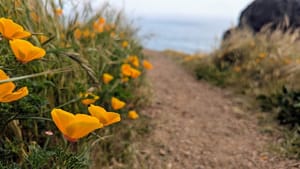I never forget about fire when I’m traveling on the West Coast.
I knew about the huge wildfires north of us, in eastern Oregon, but we still had an opportunity to explore northern California. We headed towards Lassen Volcanic National Park on our way over to the coast and up north to Portland.
Stopping in the town of Red Bluff to get gas, it was over 100 degrees F. When I stepped out of the car, it felt like a sauna, only without the cold shower afterwards.
I moved and breathed deliberately in the heat, instinctively conserving energy until I could get back in the car with the A/C blasting. As I was pumping the gas, a siren wailed. Two fire trucks sped past. I put my fingers in my ears. I had seen the remains of a small roadside fire on our way into town, people spraying water on the burnt ground, no flames visible.
We drove up the hill, the temperature remaining steadily hot until the last 30 miles or so. The place where we camped, where I lay down on a wooden bench, gazed into the blue sky, and recognized sugar pines for the first time had a slight smoky haze which blew over in an hour. I checked the fire and smoke map. There were no fires near where we were.
In the morning, we drove into Lassen Volcanic National Park. Bright blue sky. Clear views of the mountains. At the visitor center, we plugged in our extension cords, phone chargers, and batteries as we prepared some instant coffee.
Halfway through my mug of coffee, I abruptly stood up to take a better look at the sky.
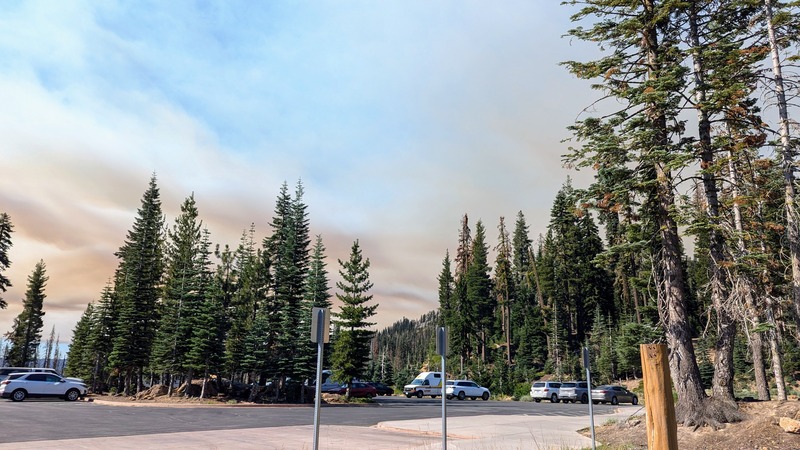
Smoke was pouring over the horizon, far away, but creeping tendrils towards us. Maybe it will just blow over, I thought, optimistically.
Two hikers walked right past us with hiking poles and wearing N95 masks. People will wear masks for smoke, but not for disease, I commented critically. I put on my N95 mask to go into the visitor center and listen to a brief ranger talk.
I learned that the park has all four kinds of volcanoes: shield volcanoes, composite volcanoes, lava domes, and cinder cones. Where we were standing in the visitor center used to be the center of a huge mountain that no longer existed. On the table-sized diorama, we saw the various volcanoes, including the famous Cinder Cone I have hiked before.
We sat down inside at a table so I could do some work on my laptop and make a phone call. An hour or two later, looking out the window, I could only see the closest trees. Everything further was obscured by gray smoke. I could not see the sky.
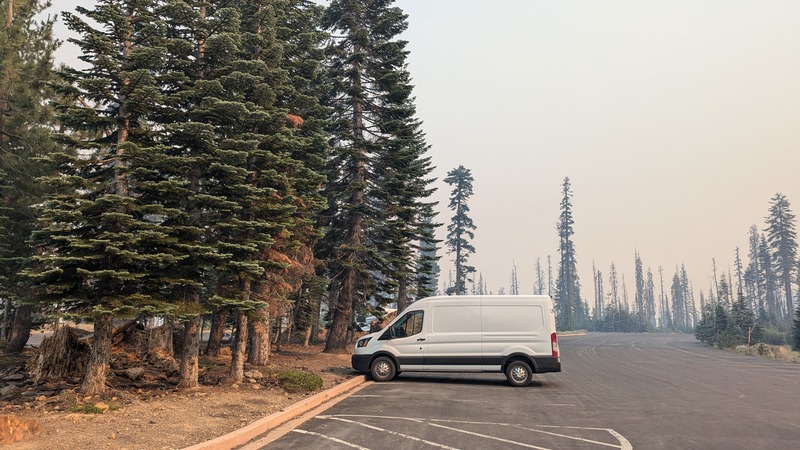
The rangers said the fire was many miles away, unlikely to reach us there. We wondered if the smoke would clear by the next day so we could hike our favorite trails and swim in some mountain lakes.
I looked up the fire online, starting with the fire and smoke map, and was shocked to see in the news that they had arrested a man accused of starting the Park Fire. He had allegedly been observed pushing a burning car into a ravine near Chico, then tried to blend in with a crowd of people evacuating from the fire. He was reported by witnesses and arrested later that day, to be charged with arson.
KQED reports that Butte County District Attorney Mike Ramsey said the fire may have started when the driver revved the engine in dirt and dry grass, trying to get it unstuck from a berm. “There’s an extraordinary amount of dry grass.” Witnesses also said the driver was behaving erratically and as if he was intoxicated, which was backed up by the blood alcohol level testing over the legal limit.
The fire started Wednesday evening and had grown huge, reaching over a hundred thousand acres by Thursday afternoon. Over a thousand personnel were fighting the fire. Perhaps those two fire trucks rushing by while I pumped the gas were among the first responders, when none of us knew it would get so large.
The next few days were even more explosive.
As of July 29, the Park Fire had burned more than 368,000 acres, the sixth largest fire in recorded California history, with almost 4,000 personnel working on it.
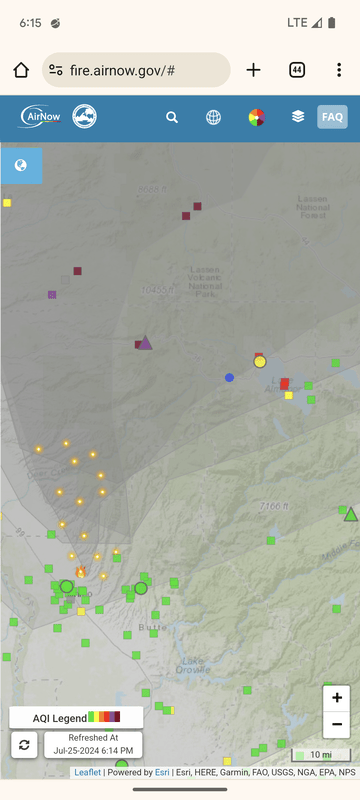
In the park on Thursday, we didn’t know the fire was going to grow so big. We just knew we couldn’t sleep in that smoke.
After discussing some possible camping options with the ranger, we pulled over to the side of the road on National Forest land that had been burnt a few years previously. The standing tree trunks were blackened and bare. The ground had a few sage plants and sparse grasses.
The air still smelled smoky, although the haze was not overwhelming. This will probably still give you a headache, I reported to Dave as I got back in the car, but it’s a lot safer than where we were.
The burned landscape combined with the smoky air felt post-apocalyptical. We kept driving. I felt like we were escaping from something so much bigger than we are it was hard to comprehend.
As we drove, at first, the sky was merely gray. Then it darkened, to oranges, browns, deeper swirling colors, and then the sun turned bright red.
You think watching a total solar eclipse is eerie? Try the sun viewed through thick smoke.
After an hour of driving perpendicular to the smoke plume, I started to see blue sky on the horizon in front of us, but where we were, it was dusky, with a red glow following us.
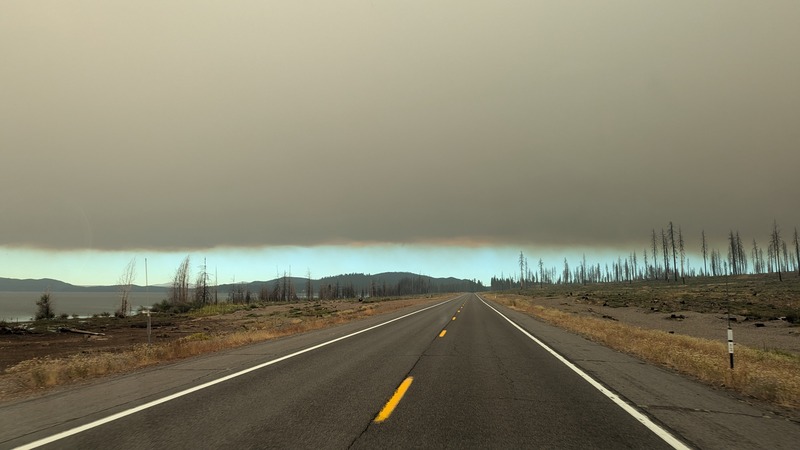
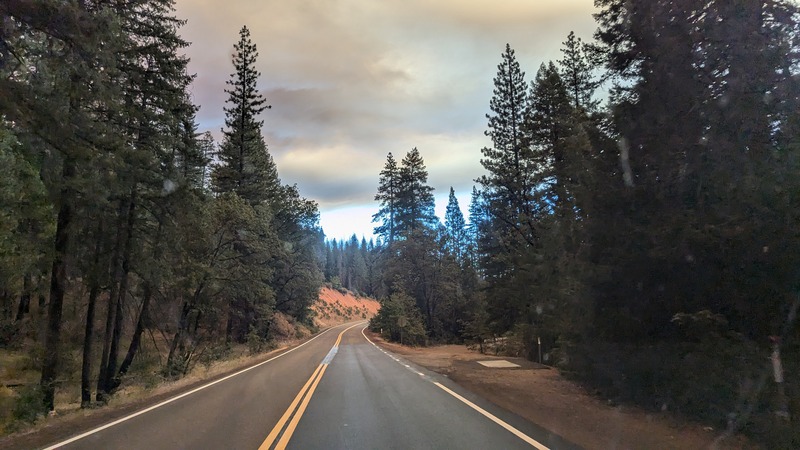

Eventually we arrived at a nice camping spot by a river, just outside the massive plume of smoke.
We are lucky to be able to move so easily.
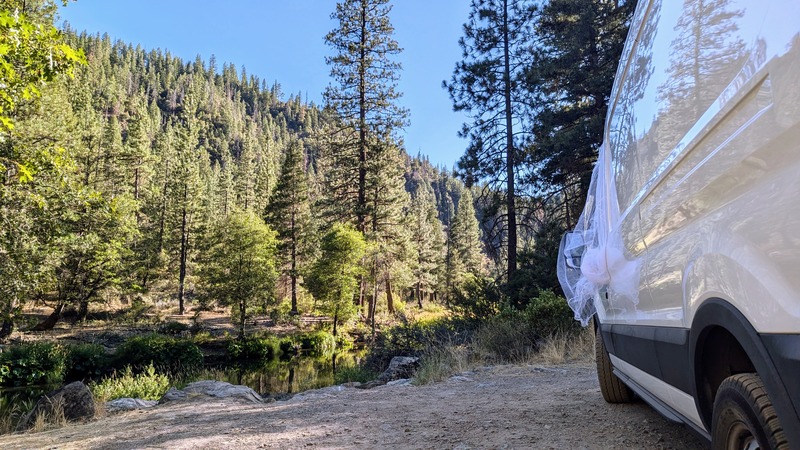
If you’re interested in learning more about wildfires and firefighting, I highly recommend following ‘s work. I am so excited for River’s forthcoming book about their experience as a wildland firefighter. I’ve learned so much about forest ecosystems, wildfires, and also about memoir writing from River. Check out their newsletter: navel gazing.

Would you like a supportive, queer-friendly community cheering you on as you write this fall? Please fill out this form if you’d like more info on memoir writing classes and our excellent discussion group:

Thanks so much for reading! Let me know what you think in the comments.
Take care,
Rey
Amplify Respect is a reader-supported publication. To receive new posts and support my work, consider becoming a free or paid subscriber.

